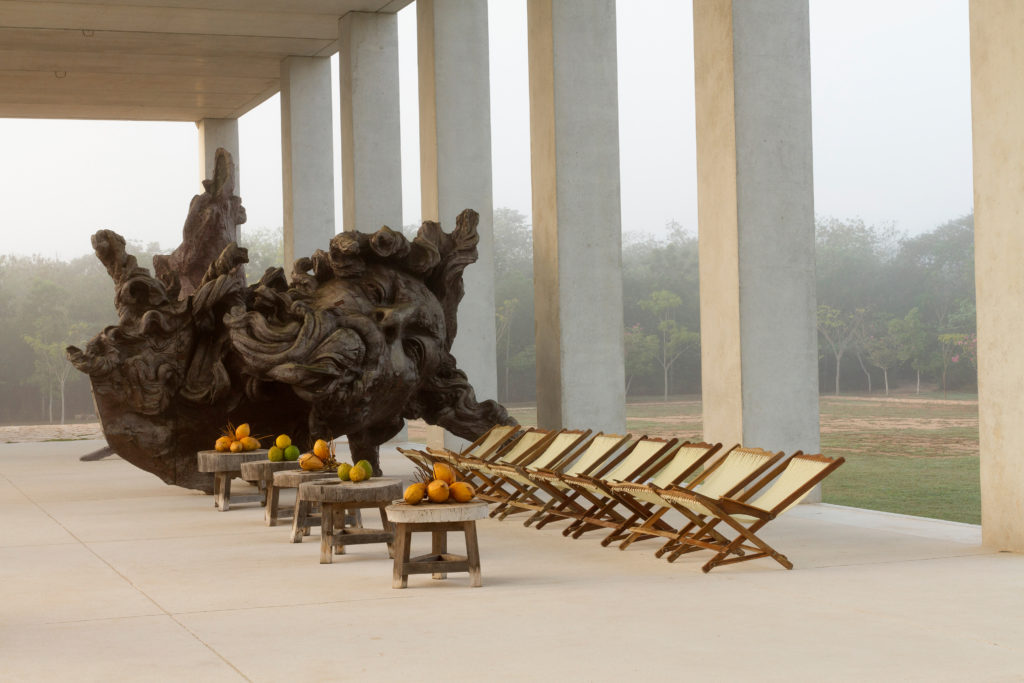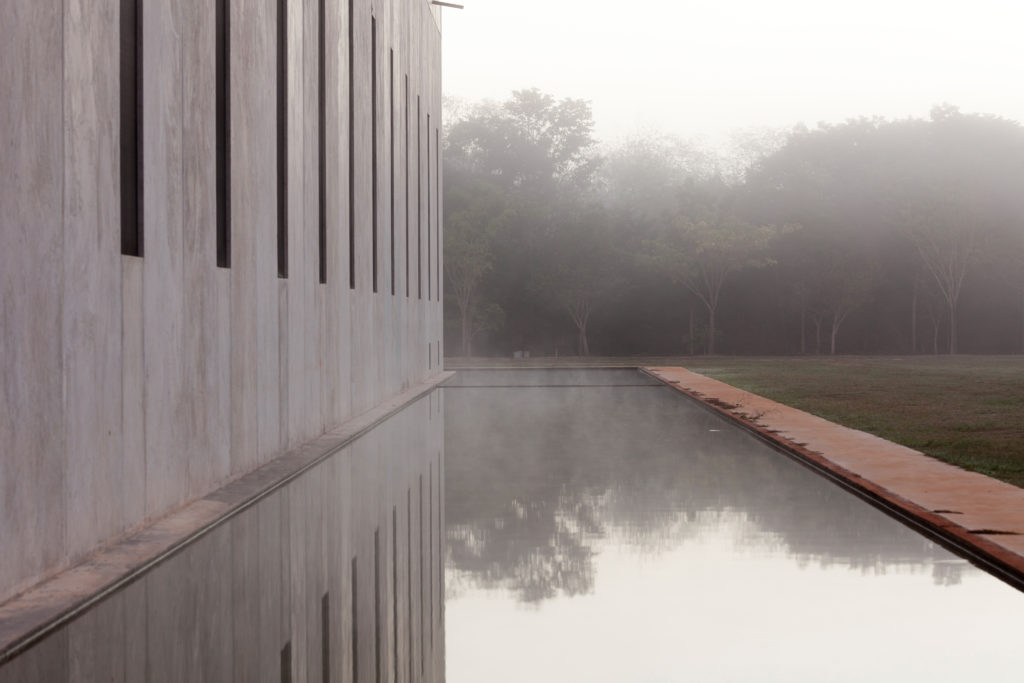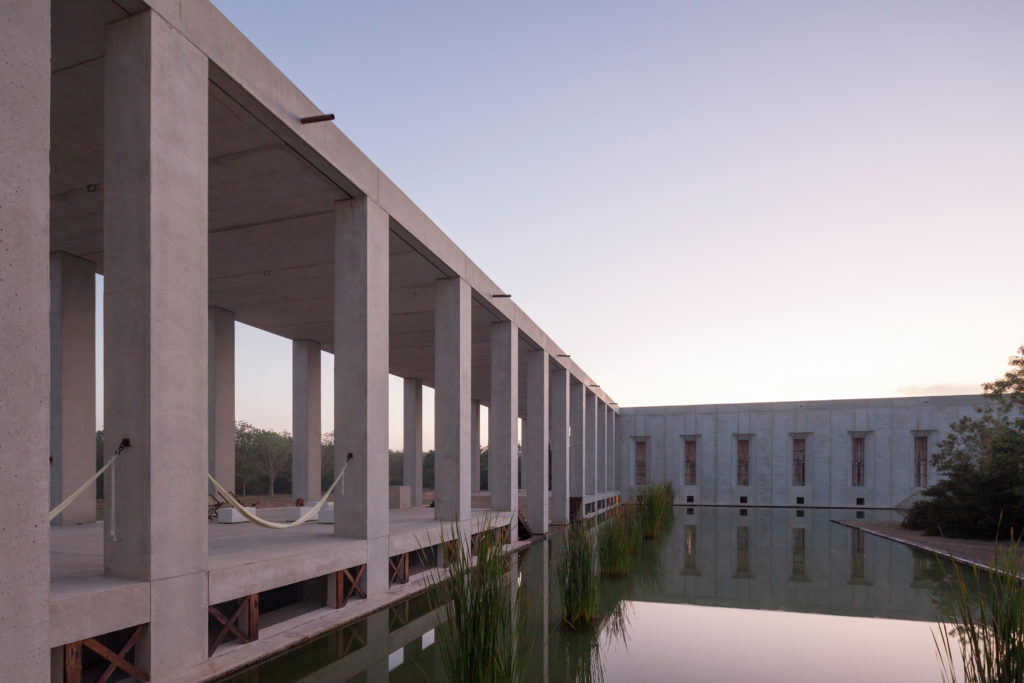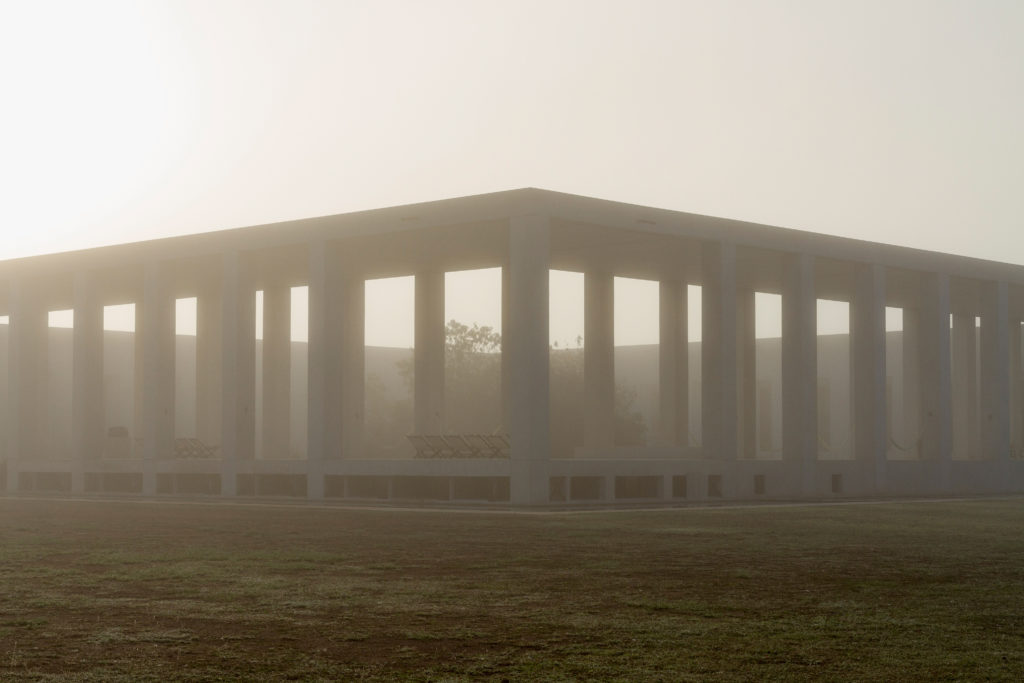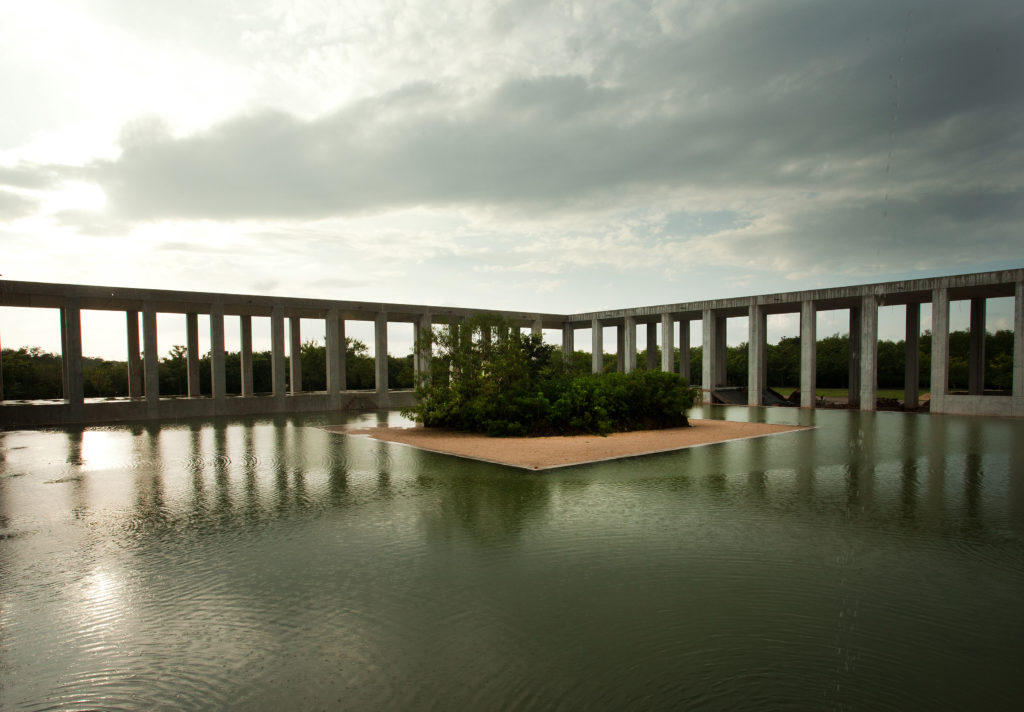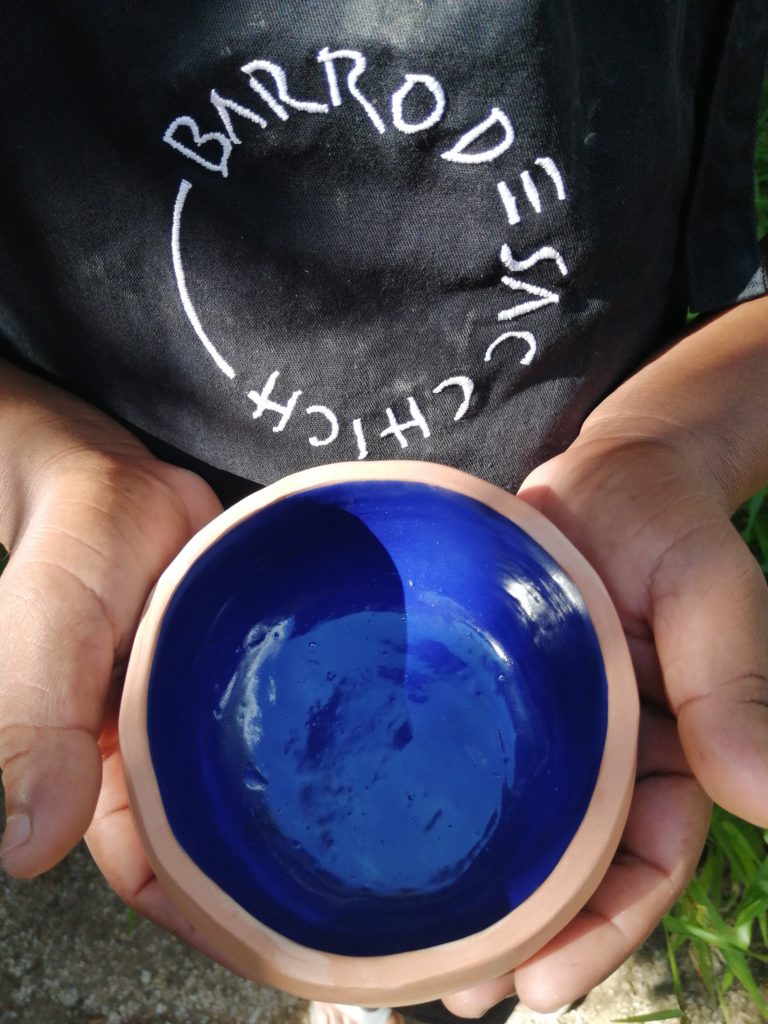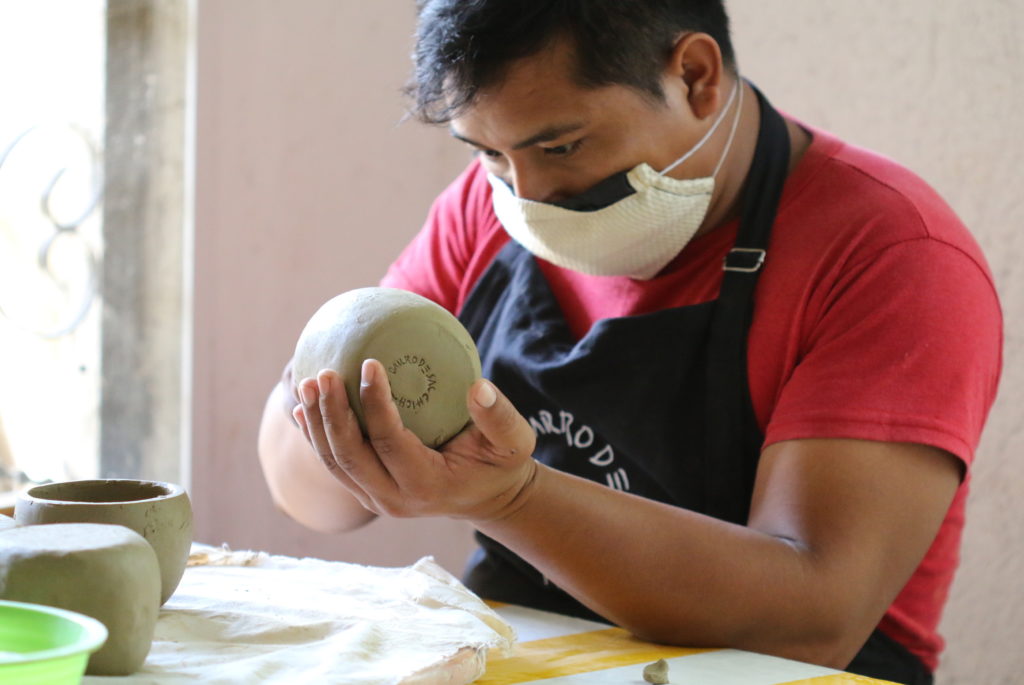
Educational Program
Our projects are designed in the field of non-formal education, with the aim of promoting experiences that involve reflection and the interchange of ideas, as a basis for the construction of the foundational principles necessary for conceptual, technical and productive innovation in the arts.
We seek to orient artists through the sharing of practical tools, resulting from concrete experiences, that they can use and enhance in the course of their professional development.
The Educational Program takes into account the different paths of action and thought through which we can approach the arts: production, theorization, presentation, exhibition, curation, criticism, restoration, teaching, dissemination and collecting, among others.
We are working on four parallel projects:
- Encuentros (Encounters)
- Seminars
- Research
- Publications
Encuentros (Encounters)
The encounters (encuentros) are oriented towards creators in their formative process. This space provides them with an opportunity to enter into dialogue with seasoned experts, promoting networking and an interchange of experiences, and theoretical and practical knowledge, that can support them in the process of building of a professional practice.
Between 2014 and March 2020, we have held 247 encounters (encuentros) that have benefited 3058 artists and cultural producers in their formative stages. More than 254 art professionals from different areas of specialization have participated in these events: gallery owners, curators, legal advisors, designers, art critics, museologists, artists, academics, cultural producers and promoters, all of whom have generously contributed to the creation of an open communication with the artists.
Seminars
The seminars are also oriented towards creators in their formative process. Each seminar addresses a specific topic and is coordinated by a specialist in the field, who presents the participants with a methodology and a series of practical tools. Each seminar lasts twelve hours and includes fifteen participants who are selected by the Foundation on the basis of their profiles and interest.
Research
The research program addresses art criticism, theory and history as well as any other subject that contributes to the production of knowledge and discourse regarding contemporary art.
Publications
The publication program produces a printed extension of the activities carried out by the Javier Marin Foundation in relation to the convergence, reflection on and professionalization of the plastic and visual arts.
The Puntal Series was born to continue fostering encounters (encuentros). The titles are devised as instruments and supporting materials for emerging artists, researchers in the arts, cultural anthropologists, academics, promoters and producers, among others; they constitute useful tools for the development of various skills for professional life. To date we have published five titles in Spanish language, and the first three can be consulted free online.
Plantel Matilde
Plantel Matilde is a laboratory for artistic ideas and residencies that seeks to support the practice and advancement of a number of different disciplines. Located in the Yucatan jungle, Plantel Matilde is also committed to the cultural and social development of the community of Sac Chich, where it is located.
Currently, Plantel Matilde is not open to the public.
Photographers: Bernardo Arcos y Javier Hinojosa
Plantel Matilde: Moving Through a Work of Art
Carmina Estrada
Access to Plantel Matilde is through an open walkway from a gate onto the street in Sac Chich, in the municipality of Acanceh, Yucatán. At the end of the walk among timber-yielding trees and native shrubs, the pathway opens up to a huge clearing in the low forest vegetation. There, in the middle of the vacant space, you behold —not without certain incredulity— an imposing and at the same time silent building, integrated into the surrounding dzidzilchés, the Jamaican dogwood, and the silk cotton trees, which at first glance brings to mind both classical and pre-Hispanic architecture.
The idea of building and living in the place dates back to 2010, when Mexican artist Javier Marín came to the state of Yucatán searching for an alternative site offering both tranquility and inspiration. And he found it less than 30 kilometers southwest of the city of Mérida, on what had been an old henequen plantation. The area, the landscape, and the isolation were all catalysts for fulfilling a pending task in his artistic endeavors: creating an architectural work. This desire may have incubated all his life thanks to what he grew up with in his childhood home: the models, sketches, and perspectives of his father, architect Enrique Marín López. Decades later, artist Javier Marín created Plantel Matilde, his architectural debut, together with his brother, architect Arcadio Marín.
Of course, the artist’s sculptural vocation is present in Plantel Matilde. The space, the very leitmotif of architecture as a discipline, is also vital to planning public sculpture. Throughout his career, Javier Marín has intervened in different physical spaces in Mexico and abroad, installing sculptures in public plazas, large-format pieces that reframe the perception of the place for daily passersby. Javier Marín thus constructs journeys to-and-fro in which the spectator becomes a participant in the relationship between public space and contemporary art. In the case of Plantel Matilde, he extrapolates this idea on a scale that makes the viewer the user, who makes that journey between architecture and sculpture and transits/inhabits the work of art.
The monumental scale of Plantel Matilde, with its 70-meter square base and 12-meter-high ceilings, responds to and satisfies two needs: on the one hand, harmoniously housing Javier Marín’s large-scale sculptures, and on the other, functioning as an observatory with a rooftop terrace higher that the treetops, a wink at the ancient Maya inhabitants of the peninsula, who were outstanding astronomers. Thus, the roof terrace allows for a 360-degree view and a continuous view of the heavens.
Physically speaking, Plantel Matilde is made of concrete and water. The former gives it strength and resistance, and using it facilitated its being built in the middle of the jungle. Water, integrated through reflecting pools that mirror lights and shadows, is both aesthetic and at the same time functional, regulating the region’s high temperatures. The water surrounding the building reminds us at first glance of medieval military architecture with its moats, used here to keep animals out. However, this primordial element in the Mayan world view transcends the first idea of isolation to also settle in the middle of the construction, in a kind of liquid cloister, which simultaneously boasts a central island that preserves the original land and flora. This way, the use of water in the exterior that continues inside gives the building a lightness —as though it were floating—, contrasting with the solidity of the construction material.
The front is a squared-off gallery. It has a succession of wide openings in the wall and high columns joined in a beautiful rhythmic exercise that expands the perceptible space. The gallery is flanked on both sides with accesses to two long lateral rooms, also joined by a square, which replicate —like in a positive/negative effect— the rhythm of the galleries with its walls and windows. While these large-scale areas can function as ateliers or exhibition spaces, the belly of the building operates as a dwelling. On both extremes of the façade, a simple stairway leads to the area where the artists-in-residence live. There, with the monastic air consistent with the sobriety of the entire construction, a series of bedrooms-cells lead off of a common room.
Again, on the surface, a broader stairway descends from floor level to the private area, a simple, comfortable space the artist can live in, and from which he or she can reach the pool, dug discretely also at floor level, so that nothing interferes with the ascetic visual rhythm of the façade. In these basements, both the residential wing and the artist’s living quarters, windows in the upper part of the stone walls are slightly above the level of the surrounding reflecting pool. This allows the water-refreshed air to cross-ventilate the open spaces, giving them a freshness that makes artificial ventilation unnecessary, in accordance with the artist’s intent of reducing environmental impact to a minimum.
Plantel Matilde is a work that jibes with Javier Marín’s aesthetic postulates. Like his sculpture and pictorial work, the ideas of process and accident are present here, the mark that the passage of time leaves on the work, the intervention of the other, the stamp. Nestled in the middle of the Yucatecan jungle, it is a continual work in progress; a visual work with both pre-Hispanic and classical influences, as well as an abstraction of the nineteenth-century architecture of the peninsula, of those old hacienda ruins that preserve the memory of the henequen boom. Its open spaces —as the artist says— have accumulated the mark of centuries and are populated with vegetation and life. Plantel Matilde is a functional sculpture, devoid of ornament, dialoguing with the artist and his work, with its environs and time, which leaves its patina on its surface.
Central de Talleres Sac Chich (Sac Chich Workshop Center)
Sac Chich Workshop Center is a project that was conceived during the first artistic residency at Plantel Matilde. This led to the founding of an initial community workshop focused on the design, creation, production and marketing of ceramics, with the aim of later developing additional workshops for other specialties.
The Center functions as a laboratory for dialogue and collaboration between designers and artisans, that seeks to generate an interchange of knowledge between the contemporary and the traditional, thus building a novel creative community.


